
Zhao Tao
출생 : 1977-01-28, Taiyuan - Shanxi - China
약력
From Wikipedia, the free encyclopedia.
Zhao Tao (Chinese: 赵涛, born 28 January 1977) is a famous Chinese actress, work in China and Europe, she has over 10 films to her credit since starting her career in 1999, muse of director Jia Zhangke. Zhao first came into international prominence through close collaboration with Chinese director Jia Zhangke and is credited with helping to bring Chinese cinema to Europe, especially Italy. As Shun Li in Io sono Li, her best starring role to date, she became the first Asian actress to win a prize at David di Donatello. Zhao's native language is Jinese, but she is multilingual, having learned to speak Italian, Mandarin and Szechuanese.
Biography
She was born January 28, 1977, in Taiyuan, Shanxi, which is also the hometown of the heroine in Still Life. As a child, she studied classical Chinese dance. In 1996, she enrolled in the folk dance department at Beijing Dance Academy. After graduation, she became a dance teacher in Taiyuan Normal College, where she was spotted by Jia during casting for Platform. Since then they work frequently together.
In 2011 she starred in the Italian movie Shun Li and the Poet by Andrea Segre, the movie was screened in the Venice Days section of the 68th Venice International Film Festival.
Zhao won the David di Donatello Award, the Italian Oscar, for Best Actress for her bilingual role.

Producer
2019년 5월, 자신의 고향 샨시로 돌아간 지아장커는 중국의 저명한 작가들이 모이는 문학제에 참석한다. 그리고 연배가 다른 네 작가의 문학과 사적 경험을 경유해 1949년 이후 중국의 역사를 반추한다. 쇼스타코비치의 음악적 모티프에 기대어 18개의 장으로 구성된 중국의 급변하는 현대사가 작가들의 글과 말로 유장하게 구현되고, 거기엔 사적 감성과 향수도 묻어 있다. 무엇보다 거리에서 포착한 평범한 인민들의 얼굴에 어린 조용한 위엄은 이것이 지아장커의 영화임을 문득 일깨운다.
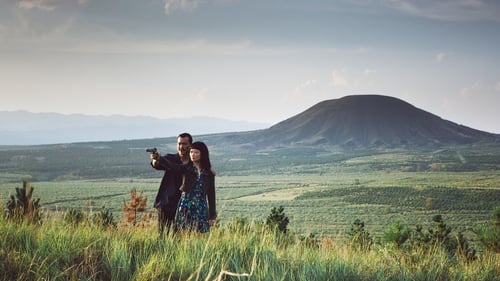
Zhao Qiao
차오는 지역 조직의 보스 빈과 사랑하는 사이다. 라이벌 갱단과의 다툼이 벌어진 동안 차오는 빈을 보호하고자 총을 발포한 결과 감옥에 5년 동안 수감되지만, 그녀가 출소하는 날 빈은 그 자리에 없었다. 모든 것을 다시 시작하고자 빈을 찾아 떠나는 차오, 하지만 빈은 고향을 떠나 대도시에서 새로운 사람들과 함께하고 있었다.
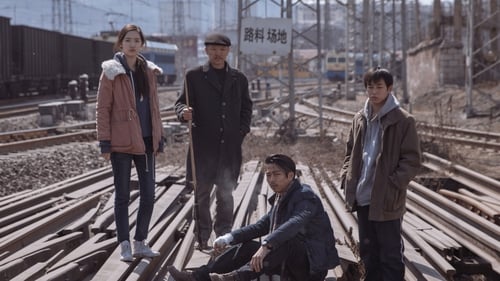
History Teacher
마을에서 벗어나길 바라는 네 명의 인물을 중심으로 새벽에서 해질 녘까지 단 하루라는 시간의 이야기를 따라간다. 그들은 저마다 코끼리가 보고 싶다. 데뷔작이자 유작으로, 작가이기도 한 자신의 소설을 바탕으로 촘촘하게 중국의 자화상을 그려낸다.

A short film omnibus featuring the work of five directors representing five countries involved in the 2017 BRICS summit, an annual international relations conference held between Brazil, Russia, India, China and South Africa. The collection—taking the concept of time as a unifying theme—depicts the economic, political, and social alienations and contradictions that create, compound, and structure issues as wide-ranging as poverty, class stratification, and homeless; familial distress; spousal abuse; and natural disaster.

Revive is one of five short films within the Jia Zhangke-produced omnibus film Where Has Time Gone? with contributions from each of the BRICS countries (Brazil, Russia, India, China, and South Africa). In Jia’s segment, a Chinese couple in the ancient town of Pingyao attempts to breathe new life into their old love as they ponder having a second child. Pingyao, home to the film festival Jia has co-founded, is a highly picturesque UNESCO World Heritage Site, and Jia humorously plays with a very recent dilemma – the second child policy dates from only 2013 – in a setting itself forcibly revived from history.
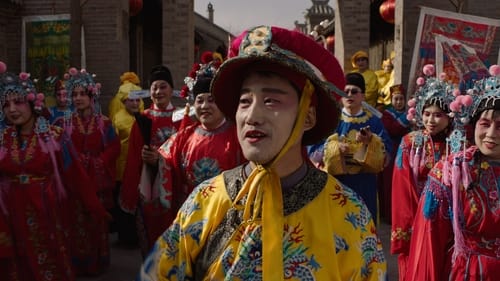
Writer
일자리를 잃은 산시성 광부 세 명은 일자리를 구하고 있다. 그들의 마지막 희망은 놀이공원 공연에 참여하는 것이다. (2017년 제18회 전주국제영화제)

Shen Tao
1999년 중국 펀양. 어릴 적부터 친한 친구 사이인 ‘리앙즈’와 ‘진솅’은 동시에 마을에서 예쁘기로 소문난 ‘타오’와 사랑에 빠진다. 둘 사이에서 고민하던 타오는 결국 가난한 리앙즈 대신 부유한 진솅과 결혼하고 아들 ‘달러’를 낳는데… 은 지아장커 감독의 청년시절을 회고하며, 과거 1999년부터, 2014년 오늘 그리고 2025년 미래에 이르기까지 사랑과 우정, 그리고 인생에 대한 이야기를 담고 있다.

Jia Zhangke's short film for Greenpeace East Asia depicts the effects of air pollution in northeast China, a region frequently blanketed in dangerous levels of air pollution. 'Smog Journeys' traces two families from two different backgrounds; one a mining family in Hebei province, and the other a trendy middle class family in Beijing. Both face a similar fate. Air pollution is one of China's most pressing environmental and health issues. Greenpeace calls for a shift from coal to clean renewable energy, as well as short term measures that better safeguard people's health.
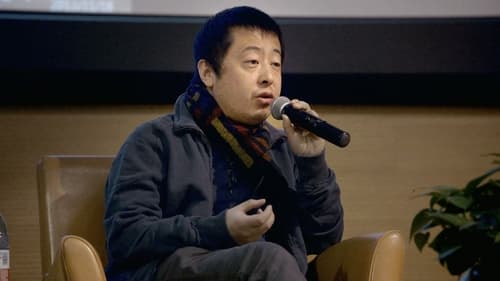
Self
중국의 대표적인 6세대 감독 지아 장커에 관한 다큐멘터리
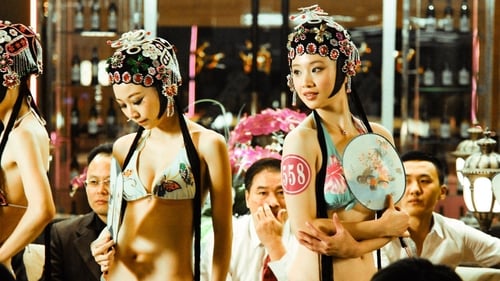
Xiao Yu
돈에 눈이 먼 마을 촌장에게 대항하기로 결심한 광부 ‘따하이’, 폭력이 지배하는 현실에 회의를 느낀 시골 출신의 청부살인업자 ‘조우산’, 유부남 애인과의 이별을 준비하는 사우나 직원 ‘샤오위’, 어린 나이에 가족의 생계를 책임지게 된 청년 ‘샤오후이’. 이들은 참혹한 현실에 부딪혀 거부할 수 없는 운명과 마주하게 되는데…

(segment "Alone Together")
In memory of the Japanese earthquake on 3.11, each director presents a 3 minute and 11 second short film in tribute to those who were lost that day.

Shun Li
A study of the friendship between a Chinese woman and a fisherman who came to Italy from Yugoslavia many years ago, who live in a small city-island in the Veneto lagoon.

Self
급변하는 중국. 그 중 최고의 항구 도시 상해(上海:상하이)에는 혁명가와 자본가, 정치가, 군인, 예술가, 조직폭력배 등 다양한 사람들이 살고 있었다. 그리고 역사를 뒤흔든 혁명이나 정치적 암살은 물론, 아련한 사랑에 이르기까지 다양한 이야기들도 공존했다. 하지만 1949년, 중국 공산주의자들의 승리 이후, 상해의 수많은 사람들은 선택의 기로에 서게 된다. 하나는 상해를 떠나 홍콩이나 대만으로 가는 것으로 이는 곧 고향을 잃어야 함을 의미했다. 다른 하나는 상해에 남아 중국 문화혁명부터 시작된 정치적 재앙들을 묵묵히 견디는 것이었다. 이렇게 자신의 결정에 따라 각각 세 도시-상하이, 타이베이, 홍콩-로 흩어져 살게 된 17명의 사람들이 카메라 앞에서 자신들의 옛 상해 시절을 회상하며 이야기를 이어간다. 그들의 경험들은 마치 17개의 챕터로 이뤄진 소설처럼 얽히고설켜 1930년대부터 2010년에 이르는 상해의 모습을 우리에게 전해준다. 그리고 이야기는 영원히 변치 않고 방황하던 영혼 하나가 상해로 돌아와 황푸강 둑을 걸으며, 도시가 겪은 이 모든 변화의 스토리를 깨달아 가는 과정으로 완성된다.

Blue Goddess
TEN THOUSAND WAVES is a 9-screen installation shot on location in China. The work poetically weaves together stories linking China’s ancient past and present. Through an architectural installation, the work explores the movement of people across countries and continents and meditates on unfinished journeys. Conceived and made over four years, TEN THOUSAND WAVES sees Julien collaborating with some of China’s leading artistic voices, including the legendary siren of Chinese cinema Maggie Cheung; rising star of Chinese film Zhao Tao; poet Wang Ping; master calligrapher Gong Fagen; artist Yang Fudong; acclaimed cinematographer Zhao Xiaoshi; and a 100-strong Chinese cast and crew. The film’s original musical score is by fellow East Londoner Jah Wobble and The Chinese Dub Orchestra and contemporary classical composer Maria de Alvear.

Jia Zhangke’s short for Modern Weekly’s special tenth anniversary issue.

Short-movie form Stories on Human Rights, 2008.
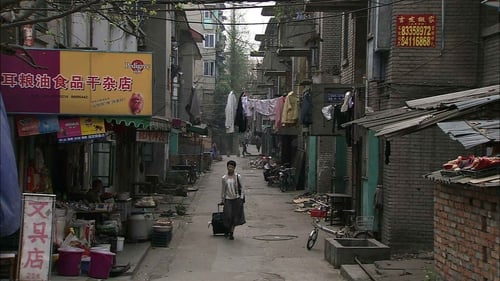
Su Na
영화 제목 ‘24 시티’는 중국 쓰촨성 청두(成都)에 있는 아파트의 이름이다. 원래 이 건물은 1958년 중국의 제1차 5개년 계획경제개발 시대에 국가 주도로 세워진 공장 ‘팩토리 420’이었으나, 냉전이 끝나자 군수산업의 위축으로 공장 운영이 불가능해졌다. 결국 2005년 중국 정부는 ‘팩토리 420’을 폐쇄하고, 이를 재개발하여 ‘24 시티’라는 거대 아파트로 만들었다. 지아 장커는 이 건물의 역사를 찍는다는 것은 중국의 근대를 다루는 것이며, 동시에 중국 사회주의 인민들의 역사를 기록하는 것이라고 생각했다. 그래서 이 영화는 실제로 이 공장에서 일했던 5명의 노동자들의 인터뷰를 담고 있으며, 그와 동시에 삼대에 걸친 세 여자의 이야기가 진행된다.

An ancestral city; through its delicious botanical garden and its branched canals, we observe the clues and traces of its ancient culture. Two couples of men and women, former lovers, meet again one year later. The yesterday's breath of youth is still perceptible in their conversations. Is it still possible for us to love? Does youth really have an end? Like the networks linking the old city, what type of ecological existence does their culture require? Written by Venice Film Festival
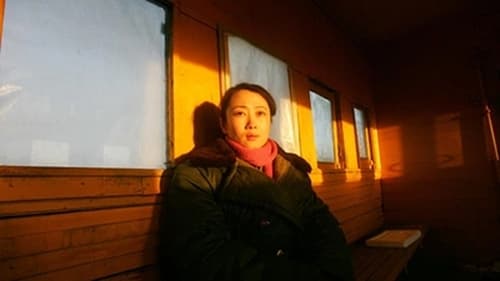
Throughout ten years of a key era in Chinese and Hong Kong history, a girl becomes fixated on a fellow commuter who she observes regularly. While the two never speak to one another, the girl captures her appearance and life changes during the years through various means such as photos and drawings.

Producer
덥고 습기 찬 날의 광동: 의류공장, 여자들은 천둥같이 시끄러운 재봉틀 소음 속에서 묵묵히 일한다. 만들어진 옷들은 곧 그들이 알지 못하는 낯선 고객들에게 실려 갈 것이다. 마치 작업라인을 가득 매운 사람들의 흐린 미래처럼. 바람이 많이 부는 파리: 중국 디자이너인 마케는 2007F/W 컬렉션에 새로운 브랜드 ‘무용’을 선보이기 위한 준비로 바쁘다. 그녀는 자신의 컬렉션을 자연과 시간이 자취를 남기는 땅에서 찾으려고 한다. 현재 중국을 대표하는 디자이너로 평가 받는 마케는 수공업제품들을 중요시 여기며, 작업라인에 의한 대량 생산을 혐오하고 그러한 패션 또한 반대하는 디자이너이다. 먼지로 뒤덮인 산샤 지방의 분양: 작은 양장점, 지역의 광부들은 옷을 수선하고 일상의 소소한 이야기도 나누기 위해 수시로 이곳을 드나든다. 어두운 밤, 광부들의 램프와 그들의 담뱃불은 외로워 보인다.
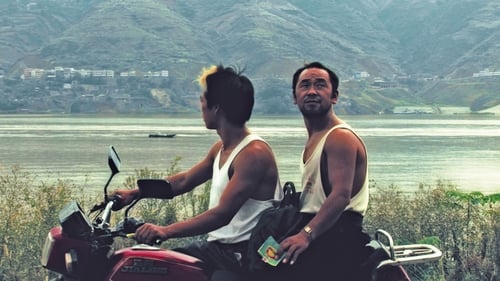
Shen-Hong Guo
16년 전 떠나간 아내와 딸을 찾아 산샤(三峽)로 접어든 남자, 삼밍. 아내가 써놓고 간 주소는 이미 물에 잠겨버리고, 수소문 끝에 찾아간 처남에게 아내의 소식은커녕 문전박대만 당한다. 낮에는 산샤의 신도시개발 지역에서 망치를 들고 휴일에는 아내를 찾아 헤매는 이 남자 산밍. 그는 아내를 만나고 딸과 재회할 수 있을까. 소식이 끊긴 지 2년 째 별거중인 남편을 찾아 산샤로 찾아든 또 한명의 여자, 셴홍. 그를 만나러 찾아 간 공장의 허름한 창고에는 자신이 보낸 차(茶)만 덩그러니 남겨져 있다. 마치 자신의 존재처럼... 가까스로 남편과 조우한 셴홍은 그의 곁에 이미 다른 이가 있다는 것을 알게 되고... 각기 다른 듯 비슷한 사연을 가지고 산샤로 찾아 온 산밍과 셴홍의 여정은 어떻게 될까. 홀로 산샤의 강을 처연히 내려다보는 두 사람. 강은 아는 듯 모르는 듯 유유히 흐른다.
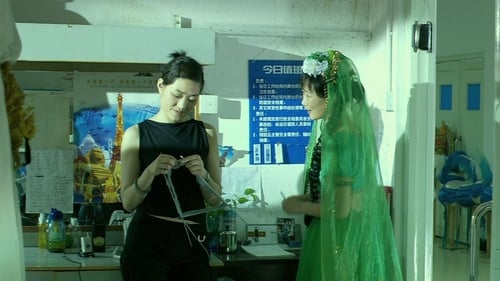
Tao
‘세계 공원’의 댄서인 따오와 공원 순찰관인 따이셩은 연인 사이지만, 관계는 예전같지 않다. 따이셩은 고향가는 길에 만난 디자이너인 쿠오에게 마음이 끌리고, 따오는 탈출구를 찾으려 노력한다. 꿈과 사랑, 기적이 가득한 놀이 공원에서도 현실은 쉽게 변하지 않는다. 세계화 지향 정책과 냉전의 흔적으로 인한 국제적인 고립으로 인한 간극은 바로 현재 중국이 안고 있는 모순이다. 에펠탑, 세인트 폴 성당, 피라미드로 가득한 세계 공원은 지구의 축소판이며, 감독은 그 속에서 중국의 모습을 날카롭게 바라본다. 을 연출하여 지난해 전주를 찾았으며, 지아장커와 오랫동안 호흡을 맞춰 온 유릭와이가 촬영을 맡았다.
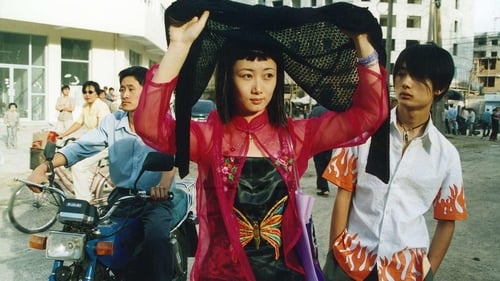
Qiao Qiao
Three disaffected youths live in Datong in 2001, part of the new "Birth Control" generation. Fed on a steady diet of popular culture, both Western and Chinese, the characters of Unknown Pleasures represent a new breed in the People's Republic of China, one detached from reality through the screen of media and the internet.

Yin Ruijuan
1979년과 1989년사이의 중국은 엄청난 변화를 겪은 시기이다. 개방정책으로 인한 문화,경제적 변화는 사람들의 의식구조에도 많은 영향을 끼쳤다. 지아장커는 샨시성(Province of Shanxi)의 펜양에 있는 한 조그만 마을의 선전가무단의 변화해가는 모습을 통해 80년대의 중국사회를 들여다 본다. 1979년의 선전가무단은 이름 그대로 정치선전 공연을 하지만, 사회의 변화에 따라 점차 공연의 내용이 락과 브레이크댄스를 포함한 대중문화 중심으로 바뀌어 간다. 이처럼 지아장커는 공연을 위해 전국을 떠돌아 다니는 그들의 행로를 통해 중국의 지난 10년간의 변화를 고스란히 담고 있다. 전기조차 들어오지 않던 곳에 전기가 들어오고 곧 이어 TV가 보급되기 시작하는가 하면, 서구문명이 급격히 유입되면서 대중들의 물질적 가치관이 바뀌기 시작하는 변환기에 공연을 다니는 선전가무단의 젊은이들 역시 자신이 추구하는 이상이 서서히 바뀌어 가는 것이다. 그러나, 그러한 사회의 급격한 변화에도 불구하고 변화가 없는 것은 삶 그 자체다. 젊은이들은 언제나 그랬듯이 미래와 미지에 대해 동경하고, 기성세대는 그러한 그들을 꾸짖는다. 남녀간의 사랑도 시대와 체제를 불문하고 변함이 없지만 사회적 제약 또한 변함이 없다. 하지만 기묘하게도 지아장커는 변하는 것과 변하지 않는 것 모두에 대해 애착을 지니고 있는 것처럼 보인다. 그것은 아마도 지난 10년이 자신에게도 소중한 시간이었기 때문일 것이다. (2000년 5회 부산국제영화제)



















